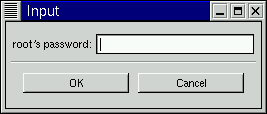Chapter 11. Working with Update Agent
One of the more convenient ways to keep your Red Hat Linux system up to date is through Update Agent. This utility allows you to automatically locate, download and install updated packages from Red Hat, Inc.
Through a secure connection to priority.redhat.com, Red Hat's own fast access FTP server, you're assured that new packages are specific to your Red Hat Linux system, rather than might be the case with upgrades you could find through another source. Upgrades and bug fixes are presented to you on a single "page" in your Web browser. You can select individual packages or all of the packages for download. You can also configure Update Agent to automatically install the new packages once they've been downloaded.
By using priority.redhat.com, you can save yourself the time and trouble of searching for and downloading individual packages from numerous FTP servers.
 | Register first |
|---|---|
To use Update Agent, you must first register your copy of Red Hat Linux 6.2. To register, go to http://www.redhat.com/now. Once you register, you can select a user name and password which you should use to configure Update Agent. Please refer to the section called Configuring Update Agent for more details. |
Update Agent can also automatically download specific packages, based on your preferences.
It isn't necessary to have a dedicated line in order to work with Update Agent; if you have dialup access to an ISP you can also benefit from the application's features.
Starting Update Agent
In most cases, Update Agent will be installed as a matter of course during a new installation or an upgrade.
To start the application in GNOME, go to the Main Menu
Button on the Panel, then go to
System => Update
Agent. If you're using KDE as your graphical environment,
you can start Update Agent by going to the
Panel => Red Hat =>
System => Update
Agent. On the menu, the entry for Update
Agent will look like: ![]()
 | You must be root |
|---|---|
Only root can use Update Agent. Each time you start the application, you will be asked to supply your root password, as Figure 11-1 shows. |
You can also start the application from the shell prompt. If you're in your user account, type su to become superuser, or root; then type root's password. When you're root, type /usr/bin/up2date to start Update Agent.
Once the application starts, you'll see a screen like Figure 11-2. From within this main dialog, you have the option of connecting to the priority update server, configuring or quitting the application.
Before continuing, however, you'll have to configure the application with information that's specific to your machine and software.
